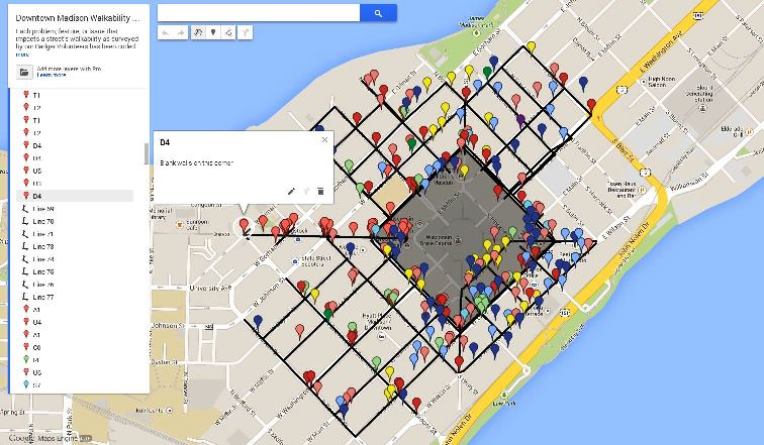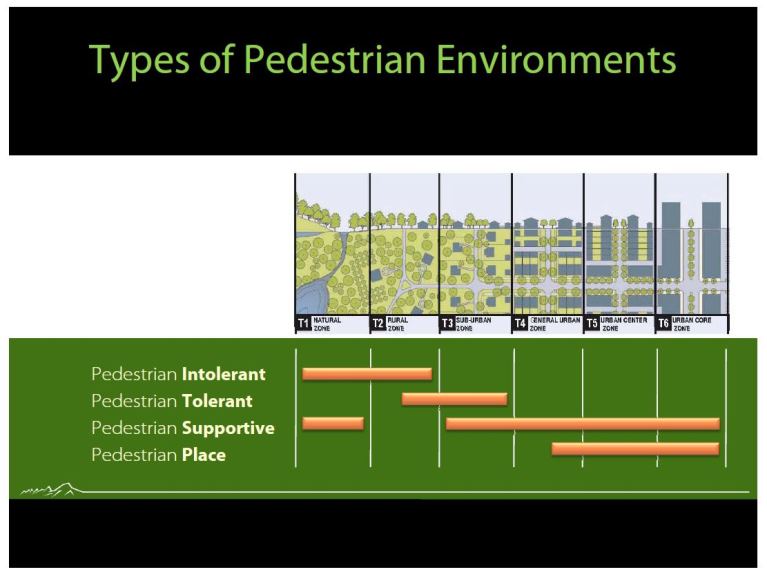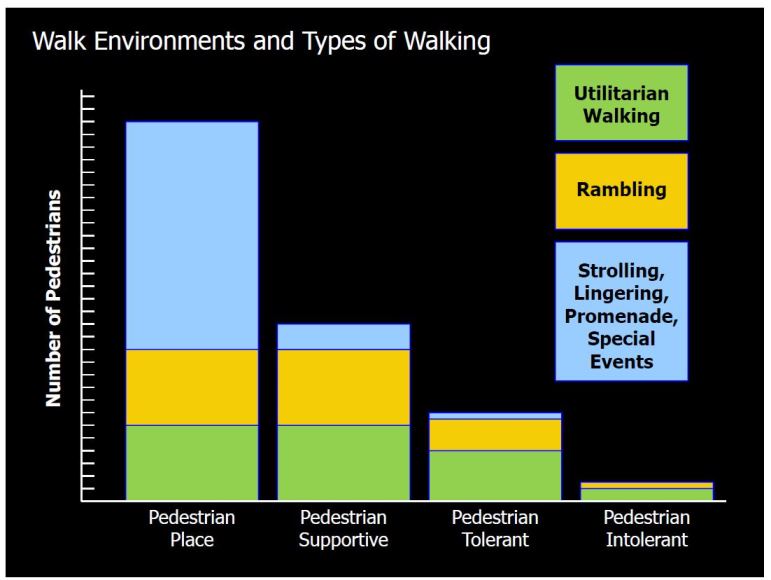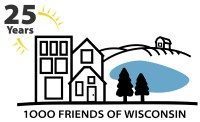UW-Madison student volunteers examine the pedestrian world, one block at a time
This spring, 1000 Friends of Wisconsin has been lucky to work with five UW-Madison students through the Morgridge Center’s Badger Volunteers program. These students, who come every week on Tuesday and Thursday, are 1000 Friends’ “eyes on the street,” literally! They are walking up and down every street in Downtown Madison performing a walkability survey, taking notes on where there are blind corners, unsafe sidewalks, poorly designed intersections, conflicts with other road and street users, and other impediments to top-notch pedestrian-friendliness.

A part of our Green Downtown initiative, this survey has several important intended outcomes:
1) Gather information about the pedestrian environment in Downtown Madison and near the UW-Madison campus
2) Expose UW-Madison students from diverse academic backgrounds to issues of community health, quality of life, and urban planning that affect us all
3) Develop a model for a new method of grassroots-level neighborhood research that is scalable and replicable in neighborhoods and communities all over the state
On the first point, the students have been hard at work taking detailed surveys of Downtown Madison’s streets, from the Capitol all the way to the quietest residential pockets of the area. They have used their observations to create a custom Google Map (above) that depicts and color-codes by category all the elements of activity and infrastructure they’ve surveyed since beginning this project in February.
The volunteers are using a rubric originally developed by the City of Madison and the Safe Community Coalition and modified for design and content by Matt Covert of 1000 Friends of Wisconsin. They group their observations into one or more of the following categories, if possible, or create new categories if none of the specific elements adequately describe what they see:
- Sidewalks
- Traffic signals
- Intersections
- Comfort
- Design
- Activity and use
- General traffic concerns
How do they know what to look for? Part of the volunteer training has included discussing public space, urban design, and transportation planning with the students in an accessible fashion. We have found certain concepts to be particularly useful in these discussions. For example, we have used the concepts of the Transect and the scale of pedestrian friendliness, from the Congress for the New Urbanism, to explain the different reasons why people walk and how walkability can be present across the whole spectrum of community development.
 Source: Musser, Terri L., AICP. “Making All Streets More Pedestrian
Source: Musser, Terri L., AICP. “Making All Streets More Pedestrian
Oriented.” CNU XVI: Urbanism and the Booming Metropolis. April 2008.

Lastly, we strive to give the Badger Volunteers a valuable experience in how change happens in communities. Accordingly, because Matt Covert sits on Madison’s Downtown Coordinating Committee, he is providing a venue for the students to discuss their work in front of that group at its April meeting. We hope that through this process of research and building public awareness, the students can take part in a successful effort to improve walkability in their community.
We will be pursuing opportunities for walkability surveys in other neighborhoods and communities in the coming months as the weather improves.
-by Matt Covert, Green Downtown Program Manager
